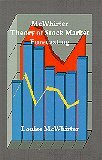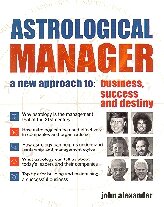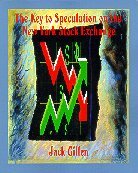The book starts with an overview of astrology as it relates to the New York Stock Exchange. It's not elementary. Before Gillen is finished, he is giving tables of superior conjunctions of Mercury with the Sun and their impact on stock prices, 1897-1968. This is followed by a table of Sun-Mercury inferior conjunctions. Only Mercury and Venus can have superior/inferior conjunctions. A superior conjunction is when the planet is on the far side of the Sun from us. An inferior conjunction is when Venus or Mercury is between us and the Sun. For the other planets there is a great deal of information on periods, including perihelion passages.
Chapter 2, on aspects: Gillen uses every aspect he can get his hands on, some 29 in all, both separating and applying. These are shown as simple diagrams.
Chapter 3, on planetary signs, gives a rather good list of what the signs rule, with a sharp focus on business and commodities. Here is Gemini:
Gemini rules such things as advertising, advertising houses, billboards, publishing, book stores, broadcasting, communications, crystal, private or public education, highways, telegraph, typesetting machinery, telephone industry, weather machinery, quicksilver, office and business machine equipment, pollution control devices, transportation such as trucks and anything connected with fast movement. (pgs. 56-7)
(Note the book appears dated, but is strongly enough written that you may easily put "computers, cellphones, internet" under Gemini and know you are right.)
Chapter 4, Panics and Crashes, is an examination of the Saturn cycle, among others. It will give you a sense of it. Remember the market is playable at all times. (pg. 71).
Chapter 5 is on accidents and disasters. He uses the 1900 Galveston flood as an example. He cites the 12th and 6th houses, and the signs Pisces and Virgo, as indicating unfortunate events, and the progressed Moon as the timer. The next chapter, on the death and illness of world leaders, is similar.
Chapter 7 comprises many examples of sensitive degrees and market reactions to them over the decades. While Gillen does not tabulate these degrees, it would easy, and very useful, to do so.
Chapter 8 is on the famous Year End Rally, which has been a feature at the NYSE for over a century. This book is about the market as it really is.
Chapter 9 is a forecast. It starts in 1979 and continues into the future. This book was published in 2009 and is largely based on earlier work. Of the present day, Gillen says that 2008-2010 will bring unemployment over 10% (true) and many bank failures (also true). He says that real estate, publications (Main Stream Media, MSM) and working conditionswill crumble under this cycle (pg. 106), which in 2011-13 will lead to a repeat of the 1880's. (This is murky, the author gives no explanation.) Saturn in Sagittarius will start a new bull market, but it won't get there until 2015. Let's hope he's right.
Chapter 10 is how to analyze corporate charts, with an eye to buying or selling their stocks. He gives hints on how to rectify stock charts to get the proper ascendant. Also in this chapter, delineations of the 12 houses in a stock chart. The first house being the place of incorporation, the second being earnings, the third being competitors, the fourth being assets, etc. Very good. Practical tips on how to buy stocks.
Appendix 1 is a list of NYSE stock birthdates, arranged by sun sign, with place of incorporation ("birth"), starting with Aquarius, and then alphabetical. There are 60 pages of entries, with about 29 entries per page, or about 1700 entries overall. Dates are given, but no times. The location is always the state of incorporation, but with the exception of New York, companies usually incorporate in the state capital. No, not all of them are in Delaware, though that state is over-represented.
Appendix 2 is new and full moons, 2000-2050, listed by date and degree. Eclipses are not noted.
Appendix 3 are the dates that Mars, Jupiter, Saturn and Uranus change signs, 2000-2050, with retrograde periods noted. This is essentially an ephemeris, but is given in text.
Overall, a very good book. My previous remarks were poor, and when I chanced across them recently I realized I had harmed the author and his publisher. My apologies to both.
AFA, 232 pages.


 Indicates a book on our Top Ten list. If you would like to find more books like it, click on the star.
Indicates a book on our Top Ten list. If you would like to find more books like it, click on the star.







